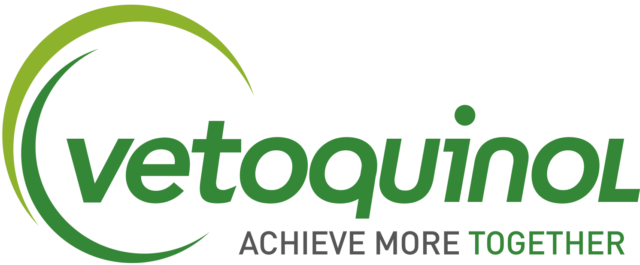Every workplace in Ontario is required to develop and implement a workplace violence and harassment prevention program that contains the various elements set out in Part III.0.1 of Ontario’s Occupational Health and Safety Act (OHSA) “Violence and Harassment.” The program must consist of a policy, procedure, reporting forms and training. The policies must be reviewed at least once per year. This means your dairy must have these elements in place in order to protect your employees from violence, bullying and harassment and to be compliant with the provincial act and regulations.
Everyone has a responsibility to ensure that all workplace parties are treated with dignity and respect, and a safe and secure work environment is maintained. Violence, bullying and harassment must not be tolerated from anyone in the workplace, including all employees, managers, supervisors and any other visitor to your dairy. The workplace violence, bullying and harassment prevention program must apply to all workplace settings, including off-site locations and social situations related to work.
Employees and other workplace parties are encouraged to report any incidents of workplace violence or harassment. Management must investigate and deal with all such complaints or incidents of workplace violence or harassment in a fair, respectful and timely manner. Information provided about an incident or about a complaint will not be disclosed except as necessary to protect workers, to investigate the complaint or incident, to take corrective action or as otherwise required by law. Employees must not be penalized or disciplined for reporting an incident or for participating in an investigation involving workplace violence, bullying or harassment.
Employer responsibilities
The employer has specific responsibilities pertaining to workplace violence, bullying and harassment. These responsibilities include:
- To take reasonable preventative measures to protect employees and other workers from workplace violence, bullying and harassment
- To assess the workplace and tasks to determine risks for workplace violence and harassment
- To ensure employees are aware of how to summon immediate assistance when workplace violence occurs or is likely to occur
- To develop procedures to address/control workplace violence, bullying and harassment risks
- To establish a process for workers to report incidents of workplace violence, bullying or harassment to the employer or supervisor, or to report to a person other than the employer or supervisor, if the employer or supervisor is the alleged transgressor
- To establish a procedure outlining how incidents or complaints will be investigated and dealt with, and how confidentiality will be maintained
- To ensure all employees are trained in violence and harassment prevention, on how to recognize and react when faced with a potential or actual situation of workplace violence or harassment, and how to report an incident
- To post the policy in a conspicuous place in the workplace
- To ensure the policy and procedures are followed by all workplace parties
There is a very broad spectrum of what may be considered workplace violence, bullying or harassment; this can range from offensive remarks to physical violence. (See OHSA definitions.)
When referring to workplace harassment or sexual harassment, the comments or conduct typically happen more than once; however, there may be a situation where the conduct happens only once. Workplace harassment can include unwelcome or repeated words or actions that are known or should be known to be offensive, embarrassing, humiliating or demeaning to a worker or group of workers. It can also include behaviour that intimidates, isolates or even discriminates.
It is important to note: Workplace harassment does not include a reasonable action taken by a supervisor relating to the management and direction of workers or the workplace.
Given this broad spectrum of incidents that can be considered workplace violence, bullying or harassment, you can see how it is possible for these incidents to stem from many interactions. It could be as simple as a disagreement between coworkers, or an unwanted visitor on your dairy, or a domestic violence situation that makes its way into the workplace.
Immediate action
If an incident of workplace violence, bullying or harassment occurs on your dairy, you must ensure the right procedures are followed right away.
If an employee experiences or becomes aware of an incident of workplace violence, harassment, bullying or a potentially dangerous situation or domestic violence, they should immediately notify their supervisor. When necessary, call 911. Once the supervisor has been made aware of a situation of workplace violence, harassment or bullying, they must act immediately, ensure the safety of all workplace parties and begin the investigation process. Whenever necessary, a third party should be engaged to ensure a fair and thorough investigation is completed.
To the extent practical, confidentiality must be maintained during the investigation. Information must not be disclosed unless disclosure is necessary to protect workers, to investigate the complaint or incident, to take corrective action or otherwise required by law.
A summary of the results of the investigation must be communicated in writing to the complainant and the respondent. If it is determined that an employee has engaged in workplace violence or harassment, appropriate corrective actions must be taken.
OHSA definitions
Here are some of the definitions from the OHSA.
Workplace violence
- The exercise of physical force by a person against a worker, in a workplace, that causes or could cause physical injury to the worker
- An attempt to exercise physical force against a worker, in a workplace, that could cause physical injury to the worker
- A statement or behaviour that it is reasonable for a worker to interpret as a threat of physical force against the worker, in a workplace, that could cause physical injury to the worker
Workplace harassment
- Engaging in a course of vexatious comment or conduct against a worker in a workplace that is known or ought reasonably to be known to be unwelcome
Workplace sexual harassment
- Engaging in a course of vexatious comment or conduct against a worker in a workplace because of sex, sexual orientation, gender identity or gender expression, where the course of comment or conduct is known or ought reasonably to be known to be unwelcome
- Making a sexual solicitation or advance where the person making it is in a position to confer, grant or deny a benefit or advancement to the worker and the person knows or ought reasonably to know that the solicitation or advance is unwelcome









